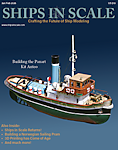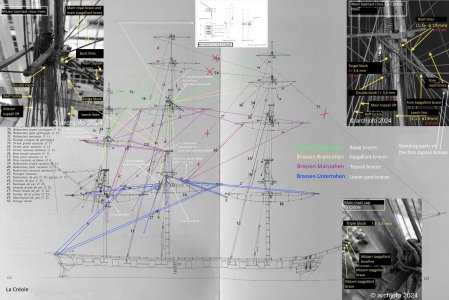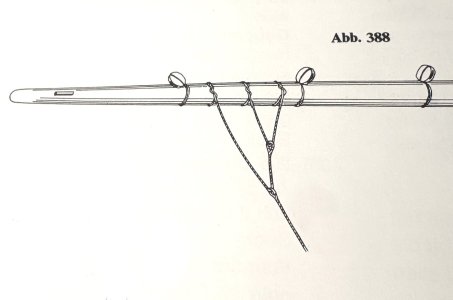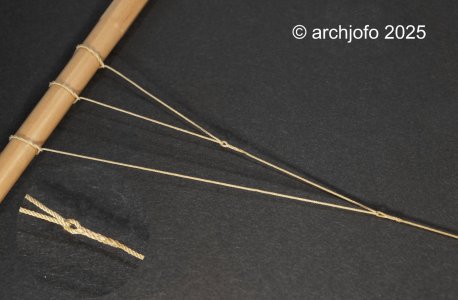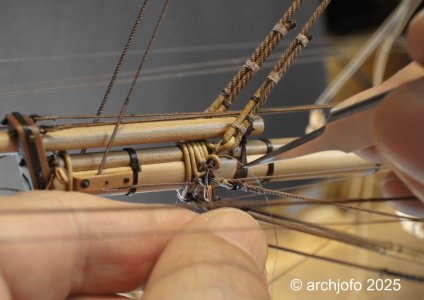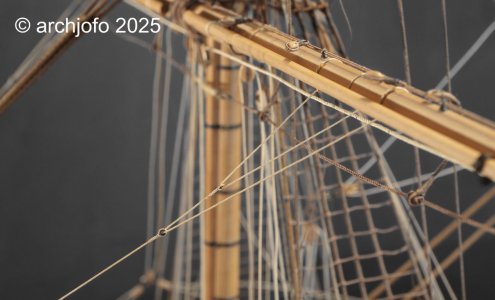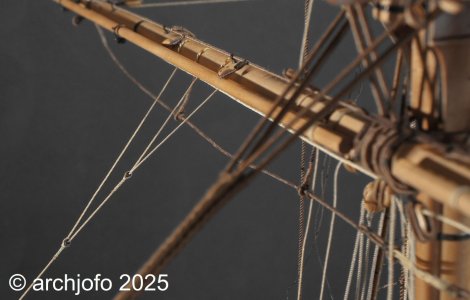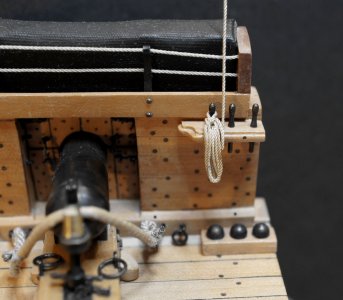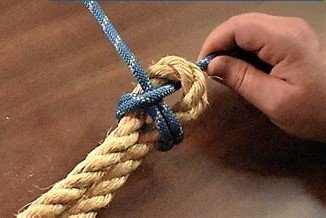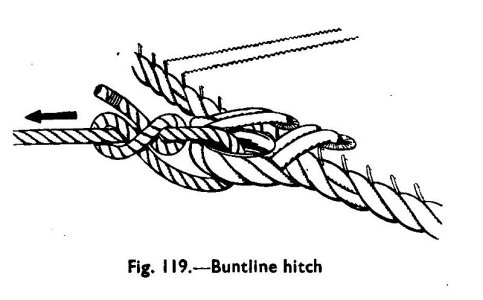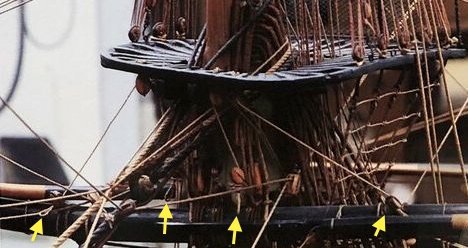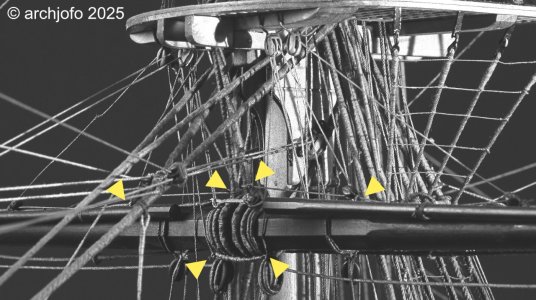- Joined
- Nov 10, 2019
- Messages
- 469
- Points
- 373

@Peter Voogt
@Herman
Hello,
I would like to thank you very much for your interest and kind contributions.
And of course, many thanks to everyone else for the likes.
Hello colleagues,
I've tried to summarize the information I gathered some time ago about the brace routing for my French corvette in a diagram for further rigging work.
If you're interested, please zoom in!
I hope you'll forgive me for only labeling it in German.
But the pictures will explain it to some extent.
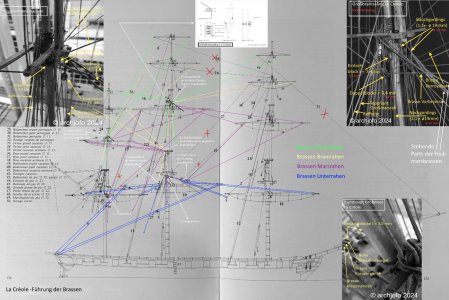
@Herman
Hello,
I would like to thank you very much for your interest and kind contributions.
And of course, many thanks to everyone else for the likes.
Hello colleagues,
I've tried to summarize the information I gathered some time ago about the brace routing for my French corvette in a diagram for further rigging work.
If you're interested, please zoom in!
I hope you'll forgive me for only labeling it in German.
But the pictures will explain it to some extent.



